Through my job I have been to a lot of sporting events. My favorite will always be the Daytona 500.
My special affinity for the place and event is because of my first trip there in 2008. It was the 50th running of the 500 and my first crack at multimedia production.
The plan to create a multimedia was hatched a couple weeks earlier at Super Bowl XLII in Phoenix, AZ (see Feb. 2 blog). Bill had been sitting next to Terry McDonnell, the managing editor of Sports Illustrated, at dinner. Terry mentioned to Bill that he wanted to start creating short videos and mulitmedias for SI.com - they were the newest of the new media at the time. Then I overheard Bill tell Terry that he and I could do that; that I was a fantastic video editor.
I remember that conversation because I remember kicking Bill under the table. I had edited a few videos before, but never in Final Cut Pro and never on deadline. Bill was confident in my ability to figure it out, and I did.
Two weeks later, Bill and I drove an hour and a half south to Daytona to give it a go.
If you’ve never been to the infield at Daytona, there is a section at turn four littered with trucks, tents, homemade scaffolding and makeshift bars. It’s a temporary city inhabited by the greatest fans in sport and surrounded by the fastest cars in America. NASCAR and it’s fans encapsulates everything that makes America singular - fast cars, light beer and sun burns.
I walked around the infield with an audio recorder and a microphone and talked to anyone who was willing to talk to me, and at NASCAR that’s pretty much everyone. They are proud, friendly and patriotic, and want to tell you all about it. As I explored Daytona International Speedway, I discovered that I enjoyed interviewing people; I liked hearing their stories and getting to know them.
I quickly learned how to phrase questions that required more than a yes or no answer. I also found that if you approach someone with a smile and respect, they’ll pretty much tell you anything you want to hear. All I really wanted to know was why they loved NASCAR and this race so much.
What I found was that the infield of Daytona was a family. These people come hell or high water every year. 2008 in particular was a difficult year for many. The economy had begun to slip, particularly in Florida and particularly in real estate and construction. Gas had jumped to $3 per gallon and many of the people I talked to weren’t entirely sure they’d have enough money to get home after the race.
They came close to tears as as they told me about the day Dale Earnhardt’s car went into the wall at turn four, or the year they didn’t have money for a campsite so one of their infield family members invited them to theirs.
Race day itself - February 17, 2008 - was a blur. I probably walked 20 miles around the track that day with a wide angle lens and audio recorder trying to find quirky pictures, quotes and ambient sound.
After the race we sent images to Sports Illustrated - Bill was still responsible for general coverage - then got in the car and drove to Gainesville. Since I had never edited a video or multimedia before, Bill called Tricia Coyne - a photographer and videographer at the Gainesville Sun who he had worked with him off and on for a few years.
Tricia met us at my apartment across from campus and immediately started importing files into Final Cut Pro. Her idea of teaching was doing and my idea of learning was watching, so we were a good team. Tricia was used to working on deadline and moved quickly.
We listened to the quotes first, pulling out the best of the bunch and placing them in the project sequence. I told her an idea I had about placing some of the portraits over ambient sound of the cars going by. She liked the idea and quickly began pulling an example together.
I watched as she set in and out points for video and attached it to the sequence, trimming or extending audio as needed.
Tricia and Bill stayed until about midnight getting the beginning of the multimedia together. Tricia gave me a few tips and shortcuts and left me with it.
By morning I had a pretty decent edit together, at least I thought so.
“I’ve never worked so hard in my life. I’ve also never had more fun…I felt so creatively alive.”
It was the first time I had ever been completely involved in a creative process from start to finish and the experience was addicting. From Daytona, we ended up visiting five more tracks that year - Sonoma, Bristol, Indianapolis, Pocono and Las Vegas - to fill out the story. Each place had it's own characters and charms.
I have since edited more videos and multimedias than I can count. That video, while not great from a technical standpoint, is still one of my favorites. Watching it brings back the warmth of the Florida sun in February, the hum of stock-cars around the 2.5 mile track, and memories of the fans who helped me do my job by inviting on top of their trucks and scaffolding, volunteering for photos and interviews, and offering me more beer and moonshine than any one person could possibly consume.
What I love most about that first Daytona 500 was that it made my future clear to me. It opened up a creativity I didn’t know I had and a world I wanted to be part of. I knew then I wanted to tell stories, and over the last nine years I’ve been lucky enough to do just that.
